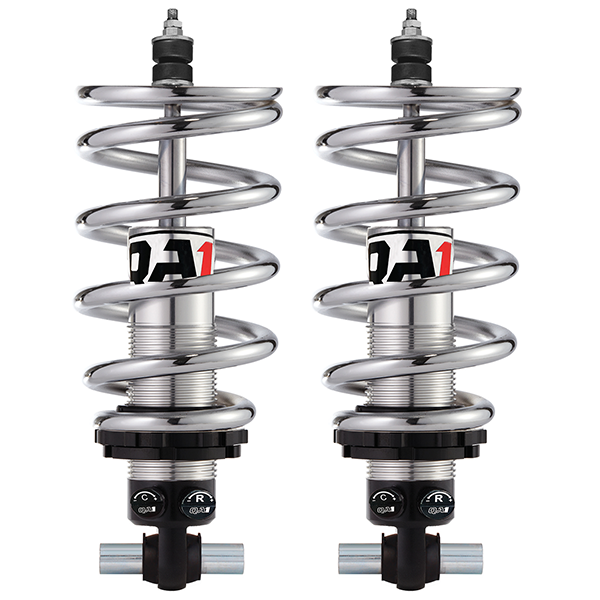Mustang II Suspension & Coilovers

Mustang II front suspension has become a go-to conversion for many hotrodders, whether they’re pulling the front end out of the junkyard or swapping in a fabricated aftermarket setup. The Ford Mustang II was one of the first affordable rigs to come from the factory with components that are now the standard in performance vehicles. This includes rack-and-pinion steering, front-steer spindles and disc brakes—even on base models.
On top of all that, we’re still talking about a Mustang. That means it was a popular enough platform—yes, even this generation—to find a huge assortment of Mustang II parts in the wild. It’s easy to track down spindles, brake options and steering racks, whether you want junkyard gold or shiny new stuff from your favorite speed shop.
It’s no surprise that many people saw opportunities to graft this front end into their own rides. It provides a big leap in drivability and stopping power compared to vehicles with old-school steering boxes and drum brake spindles.
WHATS THE DIFFERENCE BETWEEN A STOCK MUSTANG II FRONT END AND AFTERMARKET VERSIONS?
As the stock swap gained popularity over the years, many aftermarket manufacturers used the Mustang II front suspension as the basis for their own weld-in swaps. But that doesn’t make them the exact same.
First of all, the stock version has one set of dimensions. All Ford Mustang II cars, from 1974-1978, came with the same crossmember, control arms, spring pocket, rack-and-pinion, etc. That’s why our QA1 direct-fit Mustang II coil-over shocks fit those cars without any modification.
On the flip side, aftermarket Mustang II front suspension systems come in different shapes and sizes. They often use a similar shock mount on the lower control arm and incorporate a Mustang II spindle. But other aspects vary from kit to kit. The most common differences we see are the pickup points for the control arms and the spring pocket location.
The factory Ford Mustang II front suspension has very little travel. That means you can use a short shock. However, many aftermarket systems change the location of that spring pocket. This gives you more suspension travel, which is a good thing. But it also means coil-overs meant to fit a stock Mustang II front suspension will be too short. You won’t be able to achieve the ride height you want because you can’t add an extension to the machined upper stud mount of our bolt-in Mustang II coilovers.
But the length isn’t the only difference. Some aftermarket Mustang II front ends use a different mounting configuration for their shocks. It’s not uncommon to see shock mounts that require an eyelet on the upper mount, trading the stud-mount coil-over for an eyelet-to-eyelet style shock. This is another instance where our direct-fit Mustang II coil-overs would not fit.

